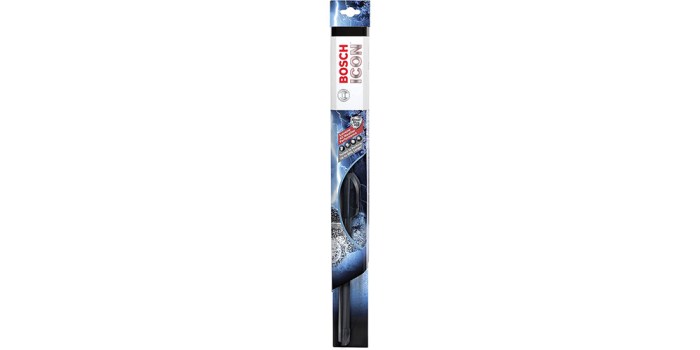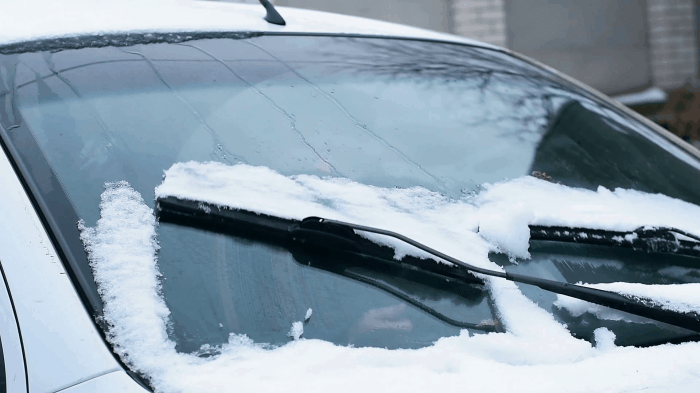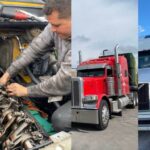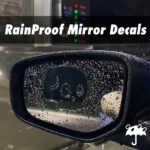Best windshield wipers for heavy rain? Yeah, it’s a bigger deal than you think! Driving in a downpour is already stressful enough, but battling blurry vision because your wipers are total garbage? That’s a recipe for disaster. This guide dives deep into the world of wiper blades – from the different types and their pros and cons to how to choose the perfect ones for your car and your budget.
We’ll cover everything from installation tips to maintenance tricks so you can see clearly, no matter how hard it’s raining.
We’ll break down the science behind wiper performance, examining blade materials, arm types, and even the impact of your car’s design. We’ll also give you our top picks for high-performing wiper blades across different price ranges, ensuring there’s a perfect match for every wallet and driving style. Get ready to say goodbye to streaks and hello to crystal-clear visibility, even during monsoon-level rainfall.
Types of Windshield Wipers
Choosing the right windshield wipers is crucial for safe driving, especially in heavy rain. The type of wiper you select significantly impacts visibility and your overall driving experience. Different wiper designs offer varying levels of performance, durability, and cost. Let’s break down the key differences between the main types.
Comparison of Beam Blade, Conventional, and Hybrid Wipers
Beam blade, conventional, and hybrid wipers represent the primary types available. Each design has unique advantages and disadvantages, particularly in heavy rain conditions.Beam blade wipers feature a single, flexible piece of rubber or silicone that spans the entire length of the wiper arm. Their aerodynamic design reduces wind lift at higher speeds, resulting in better contact with the windshield, even in torrential rain.
However, they can be more expensive than conventional wipers and replacing the blade usually requires replacing the entire assembly.Conventional wipers, also known as frame wipers, utilize a metal frame to hold the rubber blade. While generally less expensive, the frame design can be more prone to lifting in heavy rain or at higher speeds, resulting in streaks and incomplete wiping.
The multiple moving parts can also be more susceptible to wear and tear.Hybrid wipers combine aspects of both beam and conventional designs. They use a flexible rubber blade like beam blades, but often incorporate a small frame to support the blade. This blend aims to offer the benefits of both designs—improved wiping performance compared to conventional wipers and potentially lower cost than pure beam blades.
However, their performance can vary widely depending on the specific design and quality.
Wiper Blade Material Comparison, Best windshield wipers for heavy rain
The material of the wiper blade significantly influences its performance and lifespan, especially in challenging weather conditions.
| Material | Wear Resistance | Heavy Rain Performance | Cost |
|---|---|---|---|
| Rubber | Moderate; susceptible to cracking and hardening over time, especially in extreme temperatures. | Adequate in light to moderate rain, but may streak or skip in heavy downpours. | Low |
| Silicone | High; more resistant to cracking, hardening, and UV degradation than rubber. | Excellent; maintains consistent contact with the windshield even in heavy rain. | Medium to High |
| Graphite-infused Rubber | Improved over standard rubber; graphite helps lubricate the blade and reduces friction. | Good; offers better performance than standard rubber in heavy rain, but may not match silicone. | Medium |
Wiper Arm Types and Their Impact on Wiping Efficiency
The wiper arm design also plays a role in overall wiping effectiveness. Different arm types provide varying levels of pressure distribution across the windshield. For instance, some arms utilize a pivoting mechanism that helps maintain consistent pressure across the entire blade, ensuring complete contact with the glass, even in heavy rain. Other, simpler designs may not distribute pressure as evenly, potentially leading to uneven wiping and streaking.
Higher-quality arms often incorporate features that improve pressure distribution and minimize lifting during high-speed driving or heavy rain.
Factors Affecting Wiper Performance in Heavy Rain
So, you’re stuck in a downpour, and your wipers are struggling to keep up. It’s frustrating, right? The effectiveness of your windshield wipers in heavy rain isn’t just about luck; several factors significantly impact their performance. Understanding these factors can help you choose the right wipers and maintain them properly for optimal visibility in challenging weather conditions.Wiper blade size and design play a crucial role in clearing rain effectively.
Larger blades generally cover more surface area, improving visibility, especially on larger windshields. However, excessively long blades can sometimes encounter issues with contact pressure distribution, leading to uneven clearing or even streaking. The ideal size is usually determined by the manufacturer’s specifications for your specific vehicle model.
Wiper Blade Size and Length Influence
Blade length directly impacts the area cleared with each swipe. Longer blades are beneficial for larger windshields, offering more comprehensive coverage. However, excessively long blades can sometimes struggle to maintain consistent pressure along their entire length, leading to incomplete clearing and streaking. Shorter blades might be adequate for smaller windshields, but they’ll leave more of the glass uncovered in heavy rain, reducing visibility.
The best length is often determined by the manufacturer’s recommendations for your car model, striking a balance between coverage and pressure distribution.
High-Quality Wiper Blade Features
High-quality wiper blades incorporate several features to enhance performance in heavy rain. A crucial element is the spoiler. This aerodynamic feature helps to keep the blade firmly pressed against the windshield, preventing lifting and ensuring consistent contact even at higher speeds. The spoiler’s design influences the pressure distribution, pushing the blade firmly onto the glass, even in heavy downpours.
Another critical element is the pressure points along the blade, ensuring uniform contact across its length, reducing streaking and ensuring a clean sweep. Rubber quality is also key. High-quality rubber compounds are more durable and resist cracking and tearing, leading to a longer lifespan and improved performance. Consider blades with multiple pressure points and a robust spoiler for optimal heavy rain performance.
Vehicle Design Influence on Wiper Performance
Vehicle design significantly affects wiper effectiveness. Curved windshields, common in many modern vehicles, present a challenge for wiper blades, particularly in heavy rain. The curvature can lead to uneven pressure distribution, resulting in incomplete clearing, especially at the edges. Similarly, sloping hoods can interfere with the wiper’s arc, potentially causing smearing or incomplete coverage in certain areas. Vehicles with highly raked windshields can experience more significant challenges due to the increased curvature and potential for air turbulence.
Seriously, battling heavy rain? You need wipers that can handle it, like those super-duty Bosch blades. But hey, while you’re upgrading your car’s functionality, check out these awesome Carbon fiber spoilers for Honda Civic Type R – total game-changer for looks. Then, get back to focusing on those wipers so you can actually see where you’re going in the downpour!
These design factors necessitate selecting wiper blades specifically designed to accommodate the unique contours of the vehicle’s windshield for optimal performance.
Wiper Blade Maintenance and Longevity: Best Windshield Wipers For Heavy Rain
Proper wiper blade maintenance is crucial for optimal performance, especially during heavy rain. Neglecting this can lead to streaking, smearing, and reduced visibility, compromising safety. Regular cleaning, lubrication, and replacement are key to extending their lifespan and ensuring clear vision in challenging weather conditions.
Regular maintenance not only improves visibility but also saves you money in the long run by preventing premature wear and tear. A well-maintained wiper blade will clear your windshield effectively, even in torrential downpours, enhancing your driving safety and peace of mind.
Installing Wiper Blades
Replacing wiper blades is a straightforward process that most people can handle themselves. First, carefully detach the old wiper blade from the wiper arm by pressing the release tab (location varies depending on the blade type). Then, align the new blade with the arm, ensuring it’s securely connected. Finally, test the new blade’s movement across the windshield to ensure smooth and consistent wiping.
Improper installation can lead to ineffective wiping or even damage to the wiper arm.
Cleaning and Lubricating Wiper Blades
Regular cleaning is essential to remove dirt, debris, and grime that accumulate on the rubber blade. A visual representation would show a person gently wiping the rubber edge of the wiper blade with a clean, soft cloth dampened with a mild glass cleaner. The illustration should also depict the application of a small amount of silicone-based lubricant to the rubber edge of the blade.
This lubricant helps to maintain the flexibility and smoothness of the rubber, preventing it from drying out and cracking. The lubricant should be applied sparingly and evenly along the entire rubber edge. Avoid using harsh chemicals or abrasive cleaners that could damage the blade.
Common Wiper Blade Problems and Solutions
Several issues can compromise wiper blade performance, particularly in heavy rain. Addressing these promptly can restore functionality and safety.
- Streaking or Smearing: This often indicates a worn-out rubber blade or the presence of dirt and debris. Solution: Clean the blade thoroughly and, if streaking persists, replace the blade.
- Chattering or Skipping: This can result from a warped wiper arm, a damaged blade, or insufficient pressure against the windshield. Solution: Inspect the wiper arm for damage. If the arm is bent, it may need repair or replacement. If the blade is damaged, replace it. Ensure the wiper arm is properly attached and providing adequate pressure.
- Ineffective Wiping: This is a common sign of a worn-out or improperly installed blade. Solution: Check for proper installation and replace the blade if necessary.
- Frozen Blades: In freezing temperatures, ice can accumulate on the blades, preventing proper operation. Solution: Before driving, carefully remove any ice buildup using an ice scraper. Consider using a de-icer spray specifically designed for windshields.
Top Performing Wiper Blades for Heavy Rain (Brands & Models)

Choosing the right windshield wipers is crucial for safe driving, especially in heavy rain. Poor visibility can lead to dangerous situations, so investing in high-quality wipers is a worthwhile expenditure. This section highlights several top-performing brands and models, considering their effectiveness in heavy downpours.
Several factors contribute to a wiper blade’s performance in heavy rain, including blade design, rubber compound, and overall construction. High-quality wipers often feature aerodynamic designs to minimize wind lift, specialized rubber compounds for superior water dispersal, and durable frames to withstand harsh weather conditions. Let’s explore some leading brands and their offerings.
Top-Rated Wiper Blade Brands and Models
The following brands consistently receive high marks for their performance in heavy rain. Each brand offers various models to suit different vehicle types and budgets.
- Bosch: The Bosch Icon is a popular choice, known for its even pressure distribution across the entire blade length, ensuring consistent wiping performance even in torrential rain. Its unique beam design minimizes lift and chatter.
- Valeo: Valeo’s Silencio wiper blades utilize a spoiler design and a graphite-coated rubber element for smooth, streak-free wiping. They are designed to reduce noise and vibration, even at high speeds in heavy rain.
- Michelin: Michelin’s Stealth wiper blades boast a hybrid design combining the benefits of both beam and conventional wiper blades. This results in a durable and efficient wiper with good water shedding capabilities in heavy rain.
- Anco: Anco’s 31-series wiper blades are a budget-friendly option that still provides reliable performance in moderate to heavy rain. While not as feature-rich as premium brands, they offer a solid value proposition.
- Trico: Trico’s NeoForm wiper blades are another strong contender in the mid-range category. They feature a flexible frame and a durable rubber compound, designed for effective clearing in heavy rain and varying weather conditions.
Wiper Blade Price Comparison
The cost of wiper blades varies significantly depending on brand, features, and size. The table below categorizes several high-performing wipers into budget-friendly, mid-range, and premium options, based on typical retail prices. Note that prices can fluctuate depending on retailer and sales.
| Brand | Model | Category | Approximate Price Range (per pair) |
|---|---|---|---|
| Anco | 31-Series | Budget-Friendly | $10 – $15 |
| Trico | NeoForm | Mid-Range | $15 – $25 |
| Valeo | Silencio | Mid-Range | $20 – $30 |
| Bosch | Icon | Premium | $25 – $40 |
| Michelin | Stealth | Premium | $30 – $45 |
Premium vs. Budget Wiper Blade Features
Premium wiper blades offer several advantages over budget options, particularly in heavy rain. These differences justify the higher price point for those seeking superior performance and longevity.
So, you’re looking for the best windshield wipers for heavy rain? Getting good visibility is key, but sometimes you need to know why your wipers are struggling. That’s where knowing your car’s systems comes in handy. Check out this guide on Best OBD2 scanners for DIY diagnostics 2025 to troubleshoot any potential issues. Then, you can get back to focusing on finding those top-notch wipers for a clear view in a downpour.
Premium blades often utilize more advanced rubber compounds that resist cracking, tearing, and smearing, even after prolonged exposure to harsh weather. They also tend to feature aerodynamic designs that minimize wind lift, preventing the wiper from lifting off the windshield in heavy rain. This ensures consistent contact with the glass for complete water removal. In contrast, budget blades may use simpler designs and less durable rubber, leading to streaking, skipping, and shorter lifespans, especially under demanding conditions like heavy rain.
Additional Considerations for Heavy Rain Driving

Driving in heavy rain presents unique challenges beyond simply having effective wipers. Optimal visibility and safety depend on a combination of factors, going beyond just the wiper blades themselves. Understanding these interconnected elements is crucial for safe driving in challenging weather conditions.
Proper wiper blade function is only part of the equation for safe driving in heavy rain. The quality of your washer fluid and even your driving style play significant roles in maintaining visibility and control. Neglecting these aspects can severely compromise your safety.
Washer Fluid Properties and Visibility
Effective washer fluid is more than just water. It needs specific properties to cut through grime, grease, and bugs that accumulate on your windshield, especially during prolonged rain. A high-quality washer fluid will contain surfactants to help break down these contaminants and ensure they’re effectively washed away by the wipers, leaving a clean surface for clear vision. Many formulations also include de-icers to prevent freezing in colder climates and additives to help repel water, further enhancing visibility.
Using plain water, especially in colder temperatures, can lead to streaks, reduced visibility, and even the formation of ice on the windshield, significantly impairing your ability to see clearly. Choosing a washer fluid with a higher concentration of cleaning agents is especially beneficial in heavy rain, where dirt and debris build up rapidly.
Driving Speed and Windshield Angle’s Influence on Wiper Effectiveness
Driving speed and the angle of your windshield significantly impact how effectively your wipers clear rain. At higher speeds, the force of the rain increases, making it more challenging for wipers to keep up. A steeper windshield angle can also cause rain to accumulate more quickly at the top of the windshield, potentially overwhelming the wipers’ ability to clear it completely.
Conversely, driving slower allows the wipers more time to clear the windshield, improving visibility, especially in torrential downpours. Adjusting your driving speed to the conditions and maintaining a safe following distance are crucial for maintaining control and visibility in heavy rain.
Safety Implications of Worn or Inadequate Wiper Blades
Using worn or inadequate wiper blades in heavy rain is extremely dangerous. Worn blades can leave streaks, smears, and areas of reduced visibility, creating blind spots that dramatically increase the risk of accidents. These imperfections can distort your vision, making it difficult to judge distances, react to other vehicles, and see pedestrians or obstacles. Furthermore, inadequate blades might not effectively clear the windshield, leading to a buildup of water and obscuring your view.
This significantly reduces your reaction time and increases the likelihood of collisions or skidding. Regularly checking the condition of your wiper blades and replacing them when necessary is a simple but vital step in ensuring your safety on the road during heavy rain.
Final Conclusion
So, there you have it – the lowdown on conquering heavy rain with the right windshield wipers. Choosing the right wipers isn’t just about clear vision; it’s about safety. By understanding the different types, features, and maintenance techniques, you’re not just improving your driving experience, you’re making it safer for yourself and others on the road. Remember, a small investment in quality wipers can make a huge difference in your safety and peace of mind during those torrential downpours.
Now get out there and drive safely!







